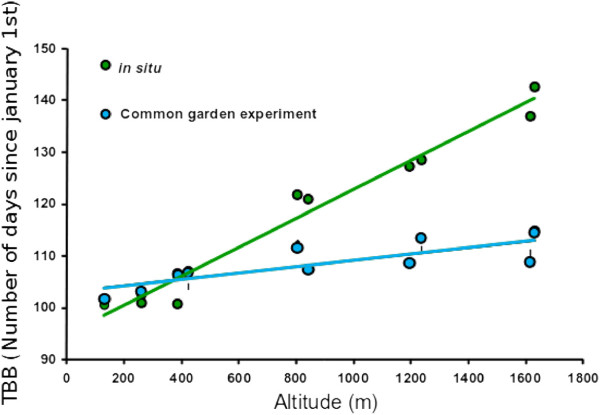Figure 2.
An example of environmental and genetic clines for time of bud burst in oaks (data of Alberto et al., 2011 [12]). The time of bud burst (TBB) was recorded in sessile oak (Quercus petraea) stands located along two valleys on the northern side of the Pyrénées mountains. In situ observations (green dots on the graph) showed that trees located at higher elevations flushed much later then trees located at lower altitudes, as a result of strong correlations between TBB and heat sum [4]. This pattern of variation, the phenotypic cline, is clearly linear. Open-pollinated seeds were collected in each stand and were experimentally raised in a common garden at low altitude, and TBB was monitored (blue points). The TBB was plotted as a function of the altitudes where the seeds were collected. A linear pattern of variation corresponds to a genetic cline. This example illustrates a co-gradient pattern of variation, because the slopes of the phenotypic and genetic clines share the same sign. Counter-gradient variation corresponds to cases where the two clines vary in opposite directions.

